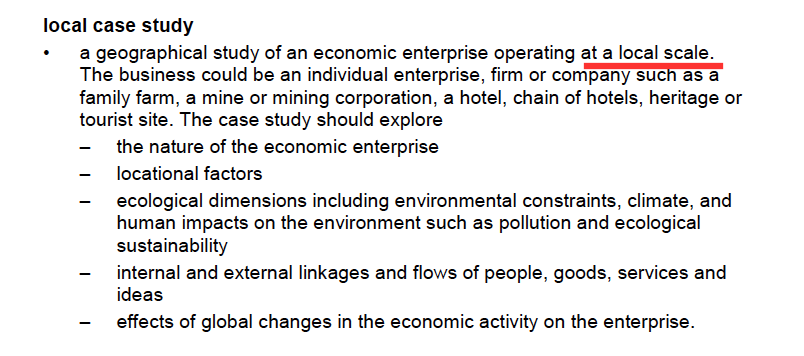|
Great White Bear Tours uses custom built all terrain vehicles called Tundra Buggies. These allow unique access to the tundra environment around Churchill providing opportunities for viewing of a range of wildlife such as polar bears, arctic foxes, caribou and migratory birds. They operate tours in Spring, Summer and Autumn, and tours vary according to the seasons. In Spring they offer tours to see the Northern Lights (Aurora borealis), in Summer they operate bird watching and wildlife viewing tours and in Autumn/Fall they run Polar bear viewing tours. The company offer both one-day tours and multi-day tours. Visitors can choose to stay at the White Bear Tundra Lodge for multi-day trips. This is a custom-designed rolling hotel to enhance wildlife viewing opportunities. The lodge consists of five large units linked together - two sleeping units with shared sleeping quarters, bathroom and showers, and separate lounge, dining and kitchen facilities. The map below indicates the location of the White Bear Tundra Lodge in relation to Churchill. Examine the case study in more detail on the 12 Geography People and Economic Activity site: Nature of the economic enterprise Locational factors Ecological dimensions Internal and external linkages Effects of global changes Is Great White Bear Tours a local case study? The NSW Stage 6 Geography syllabus requires students to examine a local case study for the People and Economic Activity topic. Depending on the economic activity studied, common case studies are local vineyards, hotels, chocolatiers. The syllabus states, "a geographical study of an economic enterprise operating at a local scale." It does not specify that it has to be in Australia, or local to you/your school. While Great White Bear Tours is not "local" to anyone studying the NSW syllabus, it can be viewed as "local" in the sense that it operates within its local area (the tours run in a relatively small geographical area, in the immediate vicinity of the business site). Let's have a look at the references to the local case study in the syllabus... There are two uses of the the word local when referring to the case study in the content section of the syllabus. In the first example it refers to the case study operating at a local level. It does not specify that it needs to be local to you or your school. Below: Screen shot from the NSW Stage 6 syllabus (Content) It is referred to again later in the content section where it refers to an enterprise operating at a local scale. Again there is no reference to it being local to you or your school. Below: Screen shot from the NSW Stage 6 syllabus (Content) What about fieldwork? Fieldwork is an integral part of geographical inquiry and learning. It is a common practice for classes to do their fieldwork on their economic enterprise, particularly if they have chosen a case study close to the school. However, while it is common practice, it is not mandated. If we look what is mandated, the syllabus states that students need to identify methods such as "collecting and analysing field data about economic activity. Note that it doesn't state that the fieldwork has to be based on the economic enterprise (the local case study). In this way a class could conduct fieldwork on Tourism in general, but not their economic enterprise and still meet requirements. There are also many opportunities to conduct virtual fieldwork. Explore some fieldwork options on the Year 12 Geography, People and Economic Activity site:
Fieldwork: Hudson Bay
0 Comments
There is a huge amount of information available about coral reef health and in particular the mass coral bleaching events that have occurred over the past two years. Two of my previous posts are linked below, but if you scroll to the bottom of the page there are a range of other articles, reports and websites regarding coral bleaching that you might find useful.
Previous posts: Mass coral bleaching events Coral bleaching - reef resilience Students should define the following key terms: - acclimatise - connectivity - recruit - adaptation - natural selection - symbiotic - zoozanthallae - parasite - photosynthesis Answer the questions below. Conduct internet research to find articles and reports which support your answers.
Resources: Coral bleaching - GBRMPA Coral bleaching and the Great Barrier Reef - ARC CoE Coral bleaching: Extreme heat pushes parts of the Great Barrier Reef beyond recovery - ABC Coral bleaching events - AIMS Great Barrier Reef: a "hopping hotspot" - Australian Geographic The changes in temperature and associated bleaching are resulting in a different mix of species on the reef. This will impact reefs in the long term.
Loss of species Fish, whales, dolphins, sharks, rays and the many other organisms found in reefs rely on the complexity of the ecosystem for survival. Some fish rely on the colour of the corals for camoflauge and the structure of the coral for hiding. Many organisms are unable to carry out normal functions and processes as a result of the increased ocean acidification associated with climate change. Shellfish are less able to create their shells due to increased pH. Slow growing corals will take 100-200 years to recover, meaning that the reef will not exist in the form that we have known it in the past. Dispersal of spawn Ocean warming impacts on the dispersal or coral spawn (eggs). Increased ocean temperatures result in a decline in the dispersal distance of coral spawn from the origin (parent coral) to the destination site. This change in dispersal patterns can impact on species' distribution, abundance or corals in particular areas and genetic diversity across reefs. Changes to dispersal patterns can also impact on the connectivity (interconnections) between different areas of the reef by limiting the areas of reef that particular coral species are located. Poleward shift of species Ocean warming can also result in a poleward shift of species from tropical zones to more temperate zones. Warmer waters are found further from the tropics and species are able to take advantage by increasing their range. In Western Australia, a species of wrasse - cheorodon rebuscens has started to shift its range with displacement of recruits south of its usual habitat. There is evidence of high recruitment at the temperate edge and no recruitment at the tropical edge. The range shift provides limited expansion opportunities, reducing resilience of the species. Irukandji are migrating further south on the Great Barrier Reef as a result of warmer waters and are also having longer seasons in other areas. There have been anecdotal reports of increases in reports of stinging and hospitalisations on islands within the Great Barrier Reef (e.g Fitzroy Island) and snorkellers are being strongly advised to wear stinger suits outside of usual peak Irukandji seasons. Irukandji and associated stingings have also been reported on western side of the southern tip of Frazer Island where they haven't previously been found. Symbiotic relationships Following bleaching events or even natural disasters, corals can become overgrown with algae, making it difficult for coral recruits to settle and grow. The mix species on a reef can impact on how resilient that particular reefs is. For example in Moorea in French Polynesia experienced high coral mortality in the 1980s. Recovery of the reef was enabled in part as a result of grazing fish such as parrot fish removing some of the algae in the process of eating corals. In this way the biodiversity of the reef contributed to high levels of resilience on the reef in comparison to some other reefs globally. The scale of the bleaching on GBR make it unlikely that these types of natural processes will have much of an impact on recovery. Below: A parrot fish on the outer reef, 2015. The title for this blogpost came from a comment Dermot O'Gorman made in his presentation at the Eco Expo last weekend (you can read my post Living in Harmony with Nature for more information). As I listened to his presentation I was typing away on my iPad and yes I did tweet. I was a little taken aback by the comment because I have used twitter to connect with environmental groups, researchers, other geography teachers and whole range of like-minded people. As a teacher, Twitter has given me access to current research in education, geography and science, newspaper articles from around the world and discussions on a whole range of issues. It came as a bit of shock to think that maybe sharing all this information wasn't actually achieving anything beyond my own classroom.
Last week as the new Federal government axed the Climate Commission and moved forward with plans to cut the carbon tax, I saw a plethora of disheartened people conversing, but it seemed that everyone was feeling a little helpless and depressed. Links to a few petitions regarding the axing of the Climate Commission were making the rounds, but they were interspersed with a number of other petitions about new government policies (NBN, cuts to universities, etc). O'Gorman's comment came back to me. Is all this discussion actually going to get anywhere? At midnight, a new twitter and facebook account opened - the Climate Council. People were invited to sign up and donate money to get the Climate Council off the ground. Made up of many of the same people as the Climate Commission, this group are set to continue the work of the Climate Commission without using federal government money. So many people signed up and tried to donate that the twitter account got suspended several times and the facebook account kept requiring captcha requests to ensure that the popularity and spread of the site was legitimate. In the first 13 hours they had raised $160,000 to get the council up and running, and by the end of the day they had reached over $247,000. This is a great example of how the virtual world can create real change in the real world. Read more... Scientists say climate cuts leave public in the dark. Support for Climate Council takes off. Climate Council |
Categories
All
Archives
May 2024
|







